Sayonara – only instead of the farewell blessing to what should have been the end of 2020 Tokyo Olympics this weekend, it is the wishful thinking that hope and reason can rhyme by this time next year.
What lifelong tales of experience may yet unfold where all athletes seek glory? What medal hopes will be won and lost, dreams shattered and fulfilled, all left as markers in Irish sporting history in the years that follow? Should Tokyo 2021 even happen.
Like some of the lasting tales of the 1964 Tokyo Olympics, staged in October of that year, when Ireland sent a team of 25, across seven sports, including only one woman, and winning one bronze medal, thanks to lightweight boxer Jim McCourt from Belfast, who contentiously lost to Velikton Barannikov from the USSR on a 3-2 split decision.
Others came close, the three-day event team, which included Harry Freeman-Jackson competing in his fourth consecutive Olympics, finishing fourth. Others are still wondering what might have been, even 56 years later, and that’s well understood when your father is still among them.
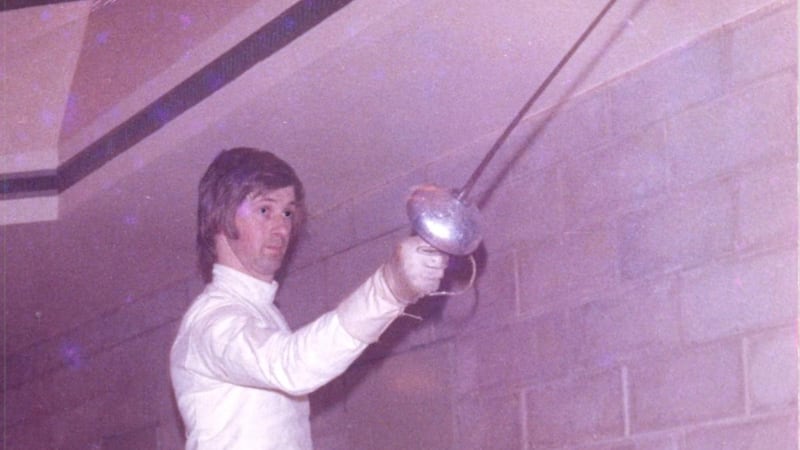
John Bouchier-Hayes
He remembers running from Sandymount fencing hall to the family home on Leeson Street, singing to himself – “I’m going to the Olympics, I’m going to the Olympics” – and being greeted by his older brother David inside the door, who on hearing the news promptly replied in true sibling fashion: “Who cares?”
John Bouchier-Hayes was 19, just out of school and working for a small accountancy firm in Dublin, and the youngest member of the Irish team selected for Tokyo. He was by then utterly absorbed in the sport of fencing, ever since breaking his leg four years previously, playing Junior Cup rugby at St Conleth’s College, a week after his father had died.
It was a severe break, keeping him in hospital for almost a year, then being told in no uncertain terms that all contact sport was out. St Conleth’s was one of the few schools in the country to offer fencing, which had no tradition in the Bouchier-Hayes family, until now. It took him on a journey that still resonates 56 years later.
"The Olympics were already embedded in me, ever since getting up in the middle of the night to listen to Ronnie Delany winning the 1,500m in Melbourne in 1956. Growing up in a big family, with 11 siblings, creates its own competitiveness as well, and I got very enthused by fencing, joining a club after school, and it took off from there.
"Making the Junior World Championships in Kent in 1963, the year before Tokyo, fuelled the ambition further, what might be achieved. And I'd a great rivalry with Michael Ryan, slightly older than me, who also went on to Tokyo. We pushed each other and that was one of the driving forces too."
He was also fortunate to come under the coaching of Patrick Duffy, who competed for Ireland in London in 1948 and Helsinki in 1952, and progress was swift. Still his selection for Tokyo came with no guarantees.
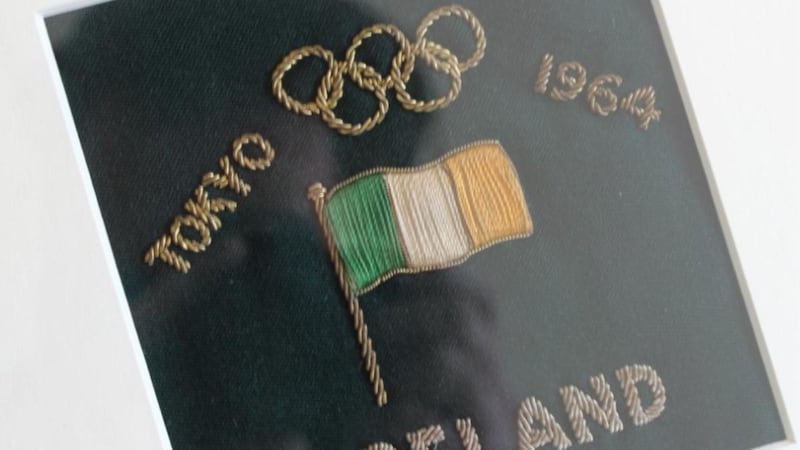
“What happened was the Olympic Council would pay a third of the cost, the federation a third of the cost, and you had to come with the other third. We certainly didn’t have that kind of money, and it was St Conleth’s who raised it. I wouldn’t have made it otherwise.
“I also remember going to my boss, at the firm where I’d just started, asking for some time off to go to Tokyo, and after some consideration him agreeing, ‘as long as it didn’t create a precedent’. What I didn’t tell him was I was going anyway.”
Exhilarated, he met most of his Olympic team-mates for the first time at Dublin Airport, where after a brief stop in Shannon, then a longer one in Alaska, their KLM flight landed in Tokyo.
"It was like arriving on another planet. The Olympic Village had previously been a US army camp, in the centre of Tokyo, and going to the dining hall and seeing people you'd read about, the likes of Peter Snell, it was dreamland for a teenager like me. The opening ceremony was quite regimented, lining up behind the flag, in ascending order of height, although there was plenty of wise-cracking from the boxers.
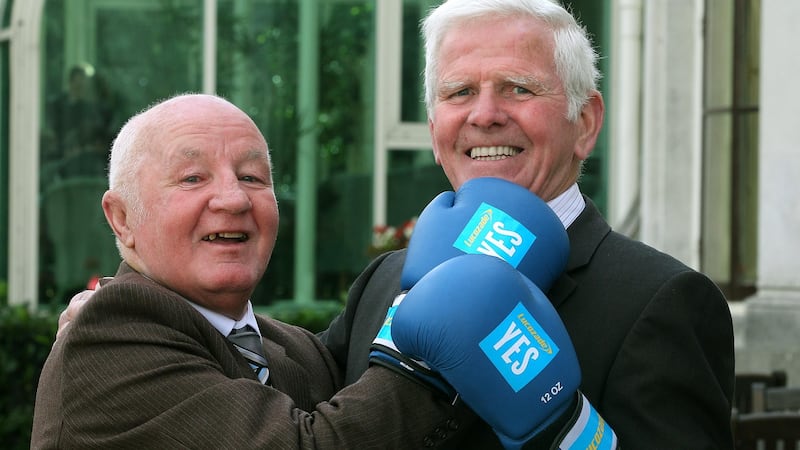
“For my own competition, I was extremely nervous, and remember my first fight, against an Egyptian I think, we crossed swords and mine was banging against his, my arm was shaking that much. I’d never experienced anything like it. I also did all three disciplines, and on reflection I should have stuck with just the foil, and the épée, not the sabre too.
“I remember being a little disappointed, not performing as well as I’d hoped, but it was a wonderful experience, absolutely no regrets, and I felt too we were a very tight-knit team in Tokyo. Most of us went to see Jim McCourt in his medal bout, and we all felt he was hard done by. To my uneducated eye, Jim was definitely the better boxer.
“At 19 you don’t know where you’re going in life, and Tokyo set me up for two more Olympics, in Mexico City in 1968 and Munich in 1972, and they were all great, such fond memories.”
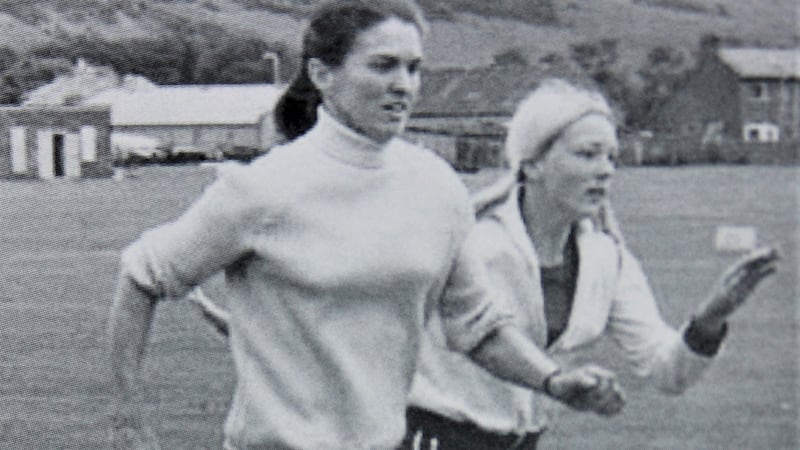
Maeve Kyle
She remembers her mother taking her down to Dublin to be fitted with her Olympic blazer, thinking that’s her off again for another while, and wondering what she might bring her home this time.
Shauna Kyle was already 10 years old and no stranger to such foreign excitement, and still shares the memories 56 since years later with her mother Maeve, who at age 91 is the oldest surviving member of the Irish team selected for Tokyo.
Already the first Irish woman to compete on the track or field at any Olympics, and with 58 international caps won in hockey, Maeve Kyle also remembers Tokyo as a place of technological wonder. Even after the experience of both Melbourne in 1956 and Rome in 1960, straightaway these Olympics, her third, felt different, and also destroyed any prejudices towards Japan.
She also celebrated her 36th birthday, two days into the trip, and even if this made her feel somewhat old by athletics standards, these were the first Olympics where she could run to her full strength. Because, for the first time, both the women’s 400 and 800m were added to the Olympic programme, for years 200m being the longest distance women were allowed to run.
Her 400m heats came first, and although she progressed to the semi-finals, clocking 55.4 seconds, she missed out on the final, this time clocking 55.3. Two days later she also made it through the heats of the 800m, running 2:11.3, which set up another semi-final date, for the following day. By then, she was feeling a little tired, or at least off her peak, and her fourth race, in six days, eventually took its toll. She missed out on the final, again, then felt a slight tinge of regret the following day, when seeing Marise Chamberlain from New Zealand, an athlete she considered her equal, win the bronze medal.
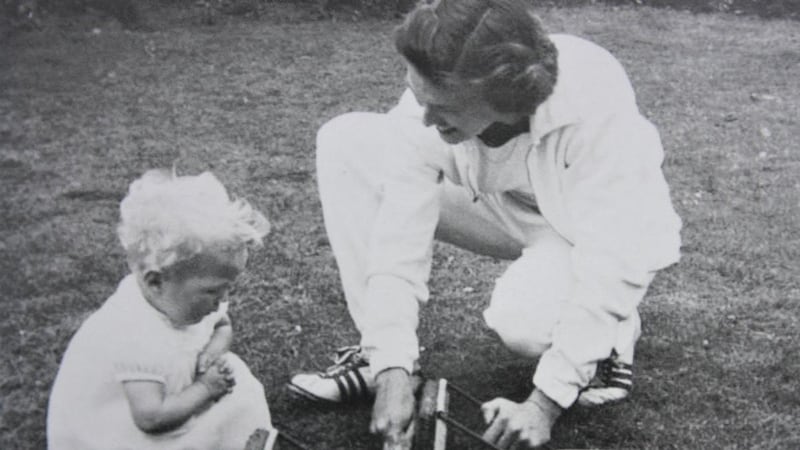
Her daughter adds to that story, because the gold medal winner, Britain's Ann Packer, always seemed of similar ability too: "Mum had beaten Anne in every race the year before, and definitely wasn't at her best in Tokyo. It was found out after she'd got quick sick with a lung condition out there, caused by the smog in Tokyo, and was quite ill for about a year after. It impacted on a few athletes, Ron Clarke in the 10,000m as well.
“But Japan made an enormous impact on her. Melbourne was actually quite far behind Europe at that time, Rome was very cosmopolitan, but Tokyo was totally different. More than any other Olympics it convinced her to dedicate more time to coaching, to help afford other young athletes with similar opportunities.
“Back then, in the Olympic Village, all the women were housed separately, totally fenced in, so no one could get to them. She later told us the story of a wrestler from Mongolia, who took a great fancy to her, and would wait outside the gates, and make various gestures to her, how they should get together. She managed to avoid him, and he went on to be one of the gong men, at the start of the Rank films. That was a little secret in the family for the while, my father Seán wasn’t very impressed.”
It wasn’t long either since a letter in The Irish Times had described Kyle as a disgrace to motherhood and the Irish nation, a woman leaving her husband and daughter to go and run in the Olympics. This didn’t bother the Kyles in the slightest.
“It being her third Olympics, for me it was just the fact she was away again, for a very long time. I was back at school in Ballymena, and would stay a lot of the time with neighbours, and just got on with things really. It didn’t do me any harm, I developed quite a strong sense of independence actually. Mum had that attitude there was nothing you couldn’t do just because you’re a girl, which was quite unusual in the 1960s.
“And because it was her birthday out there, she was presented with the most fabulous pure silk kimono, with all the attachments, which is still hanging in her wardrobe. She used to give talks on Japan, when she came home, and would sometimes wear the kimono. She has so many stories about Tokyo, still told with great pride.”
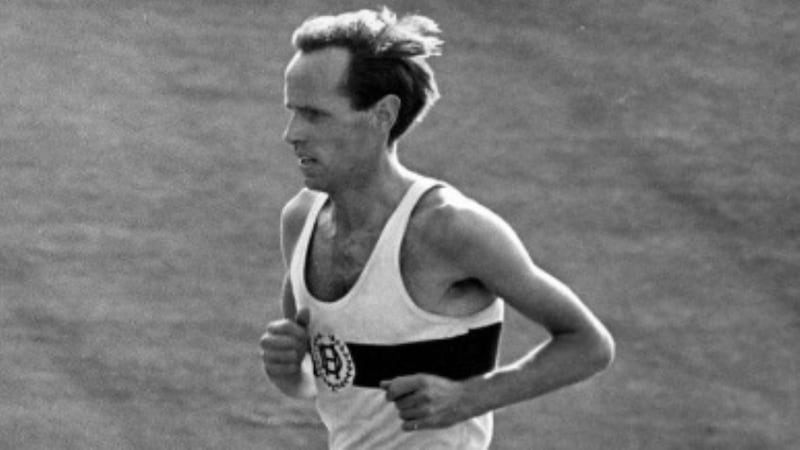
Tom O’Riordan
He won’t ever forget waking up on the day he was running in the Olympics. Especially when it was so early – too early, he knew, to start thinking about getting up.
So he lay there, defying the restlessness, convincing himself it still counted as sleep. Which is where the doubts started to creep in, the realisation that the day of the 5,000m heats had dawned, that Thomas Brendan O’Riordan had been drawn in the second of four, and there was no time for any more training now.
The last reminder came with the Daily Programme, distributed every morning around the Olympic Village, his heat scheduled for the late afternoon: 3.40pm, to be exact, which meant killing the best part of a day. Just not in the dining hall. Tokyo had been putting on these fantastic big spreads of food, and worse still provided small shovels as spoons, leaving every lean distance runner desperate not to eat too much.
At 27, he was in his running prime, yet felt it was a bit late in the season, or that he might have timed his training differently. He’d run an Irish record of 14:07.0 in Montreal in June, when Tokyo was still over four months away.
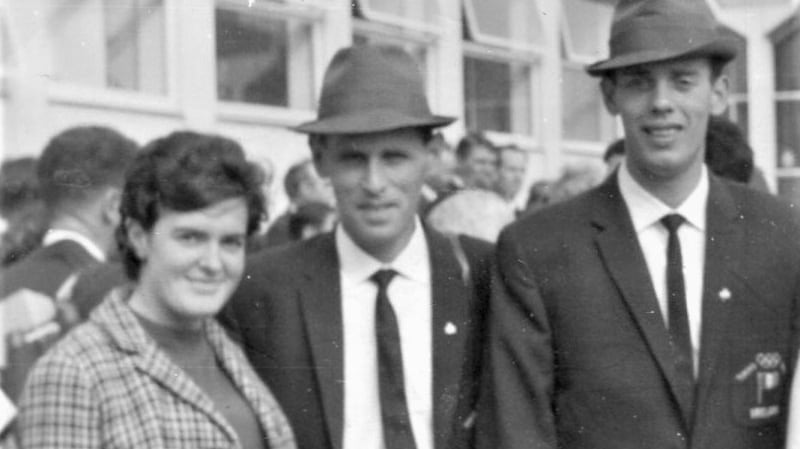
The journey out had been a thrill, sitting on the plane beside Jim McCourt, who he’d never met before, and who spent most of the flight nervously puffing away on several packets of cigarettes. He took part in the opening ceremony too, and that was enjoyable, marching in behind the Irish flag, and ahead of the Italians, who seemed to be having a good time.
"We'd actually spend most of the day down at the training track. I remember one day spotting Billy Mills, the Native American, running 200m intervals, absolutely flat out. I knew Billy very well. We'd run against each other a lot in college in America, when I was up in Idaho, and he was in Kansas. I definitely beat him one time or twice. You'd also see Ron Clarke, Peter Snell, and I suppose I was a little bit in awe of them.
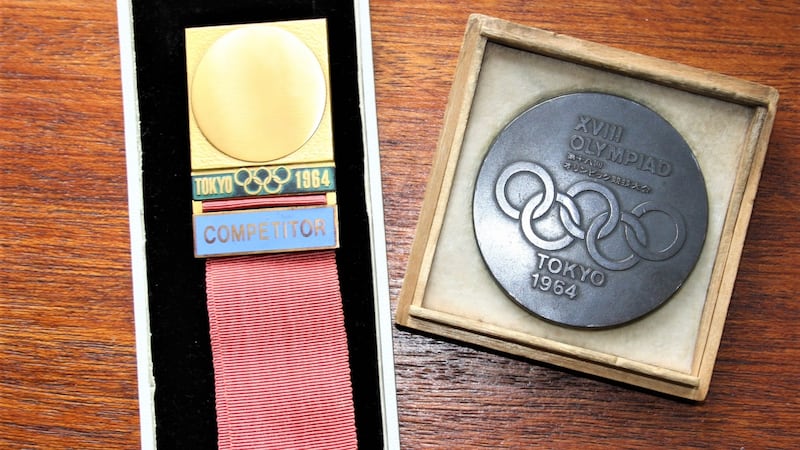
“A couple of days later I was in the Olympic Stadium, to see the 10,000 metres, and just couldn’t believe it when Mills won the gold medal. I don’t think Ron Clarke could believe it either.”
It certainly felt like a long way from the Tubrid crossroads in north Kerry and the triangular cúilín where he discovered the joy of running and his endurance capacity, and first dreamed of running the Olympics.
From the four 5,000m heats, only the top three went through to the final: “I was very keen to get the race going, but then I was always a bit impatient as a runner, anyway. For the first couple of laps I felt grand. I wanted to give myself my best shot, so I went to the front, and held the lead for three or four laps. But that’s not the ideal way to run a heat, and over the last couple of laps I started to drop back.”
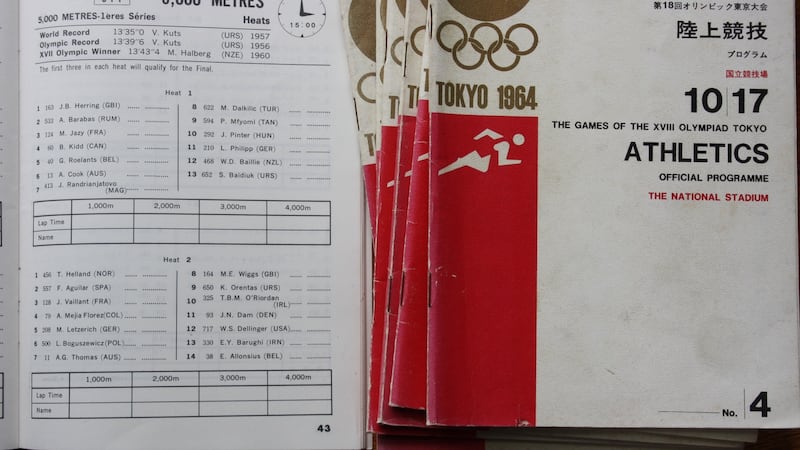
He ended up ninth, running 14:08.8; Albie Thomas from Australia, who had broken world records in the two-mile and three-mile, was 11th, Murray Halburg, the defending champion from New Zealand, didn’t make the final either from the third heat.
"Two days later I was back inside the stadium to watch the final, and couldn't believe it again when another American, Bob Schul, won the gold medal. I knew Bob too, had trained with him down in California, under the Hungarian coach Mihaly Igloi. Schul was always smart when it came to training and racing, did exactly what Igloi told him to do, no more. The other American, Bill Dellinger, one of the qualifiers from my heat, won the bronze medal.
“It’s funny, I remember everything up to and including my race, but very little about after it. That’s the way it is with the Olympics. When your race is over, and it wasn’t all that you hoped for, you just have to move on, although there will always be some regret, wonder about what might have been.
“Being absolutely honest with myself, I think after making the team, I didn’t prepare as well I as needed to. Because I was well capable of making that final, and I remember being annoyed at myself at not doing more work, being a bit pissed off when I saw some of the guys that made that final, runners I had beaten, runners I knew I was capable of beating. That’s the biggest disappointment of my life, really, not making that final.”
It really is, even 56 years later.




















